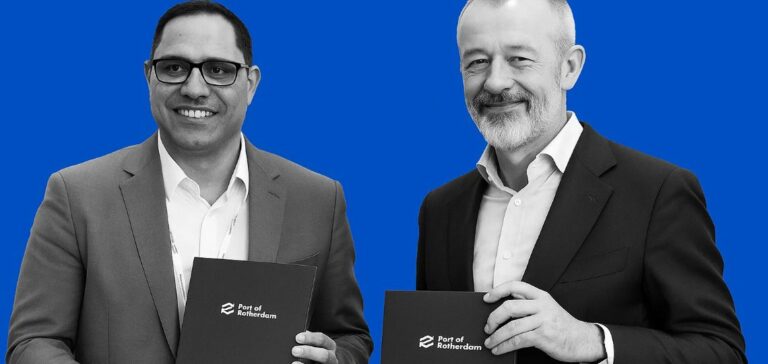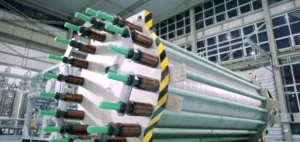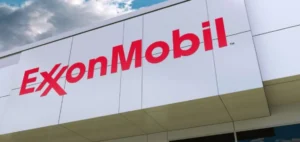Indian company AM Green and the Port of Rotterdam Authority have signed a Memorandum of Understanding to establish a green energy supply chain linking India and Northwestern Europe. The project includes the development of infrastructure for alternative marine fuels, Sustainable Aviation Fuels (SAFs), and logistics terminals suited for the transport of hydrogen derivatives.
An energy corridor between Kakinada and Rotterdam
According to both parties, the collaboration will enable the export of up to one million tonnes of hydrogen-based fuels annually, with a potential trade value of up to USD1bn. Products will be shipped from AM Green’s upcoming production facilities in Kakinada, on India’s eastern coast, to the Port of Rotterdam, Europe’s primary energy entry point.
The partnership also includes plans for specific port infrastructure to ensure the safe and efficient distribution of these fuels. The initiative seeks to create a direct logistics link between India’s low-carbon industrial hubs and Europe’s decarbonising industrial centres.
Target: 5 million tonnes of green ammonia by 2030
AM Green aims to develop 5 million tonnes of green ammonia production capacity by 2030, equivalent to roughly one million tonnes of green hydrogen. This ambition responds to increasing demand for low-carbon fuels, particularly in Europe. The Kakinada site will be among the first to start production, according to the company.
The Port of Rotterdam, which handles around 13% of Europe’s total energy demand, intends to strengthen its role as a major logistics platform for hydrogen and its derivatives. It plans to integrate the supply chain into its existing infrastructure to support the flow of green molecules to European industries.
Hydrogen-ready logistics infrastructure
The development of port facilities in Rotterdam is part of a broader effort to meet the future requirements of the hydrogen economy. Technical discussions are focusing on storage capacity, transshipment systems and safety protocols specific to synthetic fuels.
Boudewijn Siemons, Chief Executive Officer of the Port of Rotterdam Authority, stated that “this agreement marks an important step towards establishing a robust supply chain for low-emission fuels and chemicals.” He added that the port’s geographic location and infrastructure strengthen its capacity to accommodate these new flows.
Anil Chalamalasetty, founder of AM Green, said the agreement aligns with their global strategy, which includes producing one million tonnes of SAF annually alongside ammonia. He added that the partnership will facilitate large-scale transfer of green molecules between India and Europe.






















